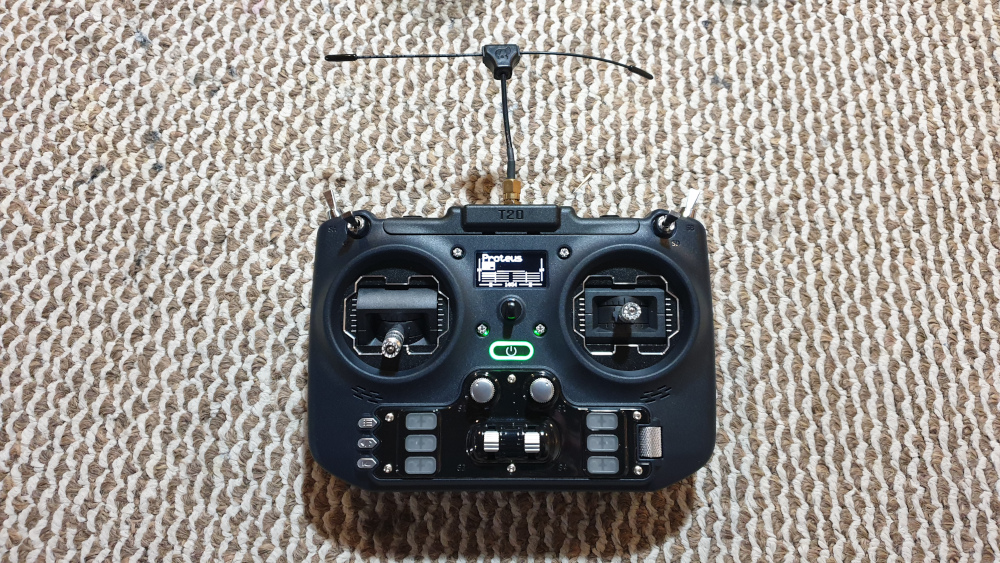New topic, as requested.
Hope the title is OK.
David
In total there are 31 users online :: 0 Registered, 0 Hidden and 31 Guests
None
Most users ever online was 180 on Tue Nov 05, 2019 6:03 am
Our users have posted a total of 12476 messages in 1986 subjects
We have 1017 registered users
The newest registered user is Bazdiving
 ExpressLRS - 868/915 Mhz equipment
ExpressLRS - 868/915 Mhz equipment




geofrancis wrote:this might be usefull for you, its a crsf pwm decoder that runs on a stm31f1
https://github.com/CapnBry/CRServoF
geofrancis likes this post



david f, geofrancis and cat like this post

david f likes this post

 Re: ExpressLRS - 868/915 Mhz equipment
Re: ExpressLRS - 868/915 Mhz equipment
 Re: ExpressLRS - 868/915 Mhz equipment
Re: ExpressLRS - 868/915 Mhz equipment
 Re: ExpressLRS - 868/915 Mhz equipment
Re: ExpressLRS - 868/915 Mhz equipmentgeofrancis wrote:I just got a radiomaster pocket for my daughter, my old 9xr pro was too big. I have been impressed with it so far, it feels like a big xbox controller.

 Re: ExpressLRS - 868/915 Mhz equipment
Re: ExpressLRS - 868/915 Mhz equipmenttsenecal wrote:geofrancis wrote:I just got a radiomaster pocket for my daughter, my old 9xr pro was too big. I have been impressed with it so far, it feels like a big xbox controller.
I have the Pocket, the Zorro, the TX12, and will have a MT12 as soon as i can get one.
There is nothing out there for the price of the Pocket that comes close to its capabilities.
Having said that, i like the Zorro more than the Pocket.

 Re: ExpressLRS - 868/915 Mhz equipment
Re: ExpressLRS - 868/915 Mhz equipmentgeofrancis wrote:tsenecal wrote:geofrancis wrote:I just got a radiomaster pocket for my daughter, my old 9xr pro was too big. I have been impressed with it so far, it feels like a big xbox controller.
I have the Pocket, the Zorro, the TX12, and will have a MT12 as soon as i can get one.
There is nothing out there for the price of the Pocket that comes close to its capabilities.
Having said that, i like the Zorro more than the Pocket.
The only thing that annoys me is that it doesnt charge the batteries with usb.

 Re: ExpressLRS - 868/915 Mhz equipment
Re: ExpressLRS - 868/915 Mhz equipmenttsenecal wrote:geofrancis wrote:tsenecal wrote:geofrancis wrote:I just got a radiomaster pocket for my daughter, my old 9xr pro was too big. I have been impressed with it so far, it feels like a big xbox controller.
I have the Pocket, the Zorro, the TX12, and will have a MT12 as soon as i can get one.
There is nothing out there for the price of the Pocket that comes close to its capabilities.
Having said that, i like the Zorro more than the Pocket.
The only thing that annoys me is that it doesnt charge the batteries with usb.
just double checking that you are plugging the usb-c cable into the "bottom" port, next to the microsd card slot? mine charges fine that way.
with the power to the radio off, the power switch should glow red.
one more thing, make sure you have the battery voltage properly calibrated. (hardware settings)

 Re: ExpressLRS - 868/915 Mhz equipment
Re: ExpressLRS - 868/915 Mhz equipmentdavid f and geofrancis like this post

 Re: ExpressLRS - 868/915 Mhz equipment
Re: ExpressLRS - 868/915 Mhz equipmentdavid f and geofrancis like this post

 Re: ExpressLRS - 868/915 Mhz equipment
Re: ExpressLRS - 868/915 Mhz equipment
 Re: ExpressLRS - 868/915 Mhz equipment
Re: ExpressLRS - 868/915 Mhz equipmentgeofrancis wrote:you can get the bayck for 15 at the moment https://www.aliexpress.com/item/1005004841827716.html
I have been looking at a lot of the elrs stuff recently as mLRS is getting ported over to esp32 chips so it's compatible with ELRS hardware..

 Re: ExpressLRS - 868/915 Mhz equipment
Re: ExpressLRS - 868/915 Mhz equipment
 Re: ExpressLRS - 868/915 Mhz equipment
Re: ExpressLRS - 868/915 Mhz equipmentgeofrancis wrote:if your familiar with flight controllers, something like inav would give you all the sensors you need.

 Re: ExpressLRS - 868/915 Mhz equipment
Re: ExpressLRS - 868/915 Mhz equipmentdavid f likes this post

 Re: ExpressLRS - 868/915 Mhz equipment
Re: ExpressLRS - 868/915 Mhz equipmentdavid f, SimonH and geofrancis like this post

 Re: ExpressLRS - 868/915 Mhz equipment
Re: ExpressLRS - 868/915 Mhz equipment
 Re: ExpressLRS - 868/915 Mhz equipment
Re: ExpressLRS - 868/915 Mhz equipmentdavid f likes this post
» Futaba -868/915mhz equipment
» Darnell type 21 submarine, need some help
» Robbe Seawolf V2
» bladder bags
» WW2 mini sub build
» Peral Submarine of 1888
» U-Boat R/C?
» Cheap Arduino Auto leveler